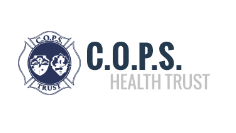Prescriptions
COPS Trust offers many different Medical and Rx plans designed specifically to fit the needs of the public safety sector. Our plans are supported by Blue Cross Blue Shield of Michigan and any other state Blue Cross Blue Shield Association member.
New Program: Specialty Pharmacy Benefits
As part of our ongoing efforts to demonstrate excellent member experience while driving lower costs, Blue Cross Blue Shield of Michigan will be adding exclusive specialty pharmacy benefits to all self-funded groups effective January 1, 2026.
How it works:
- Members who fill their prescriptions at a limited distribution drug pharmacy can continue using this pharmacy.
- Members who get their specialty medications from pharmacies not listed will need to get new prescriptions from their health plan providers and use Walgreens Specialty Pharmacy to fill them. Walgreens Specialty Pharmacy is prepared to help members through this process.
Rx Formulary Changes – Effective January 1, 2026
Beginning January 1, 2026, updates to the Blue Cross Custom Drug List will go into effect. Some medications will no longer be covered, including certain brand-name drugs and their generic equivalents. If you fill a prescription for one of these medications on or after that date, you may be responsible for the full cost.
To help with the transition, suggested covered alternatives—selected for their similar effectiveness, quality, and safety—are included. These may require prior authorization or meet other coverage requirements.
Click below to view the full list of changes and recommended alternatives.
Understanding GLP-1 and Orphan Drugs: Why They May No Longer Be Covered
In recent years, certain types of medications – like GLP-1 drugs, orphan drugs, and ultra-orphan drugs – have received a lot of attention. You may have even seen them advertised on TV or heard about them from your doctor. These medications can offer real health benefits for specific conditions. However, many health plans have made the difficult decision to limit or stop coverage of some of these drugs. Here’s why.
